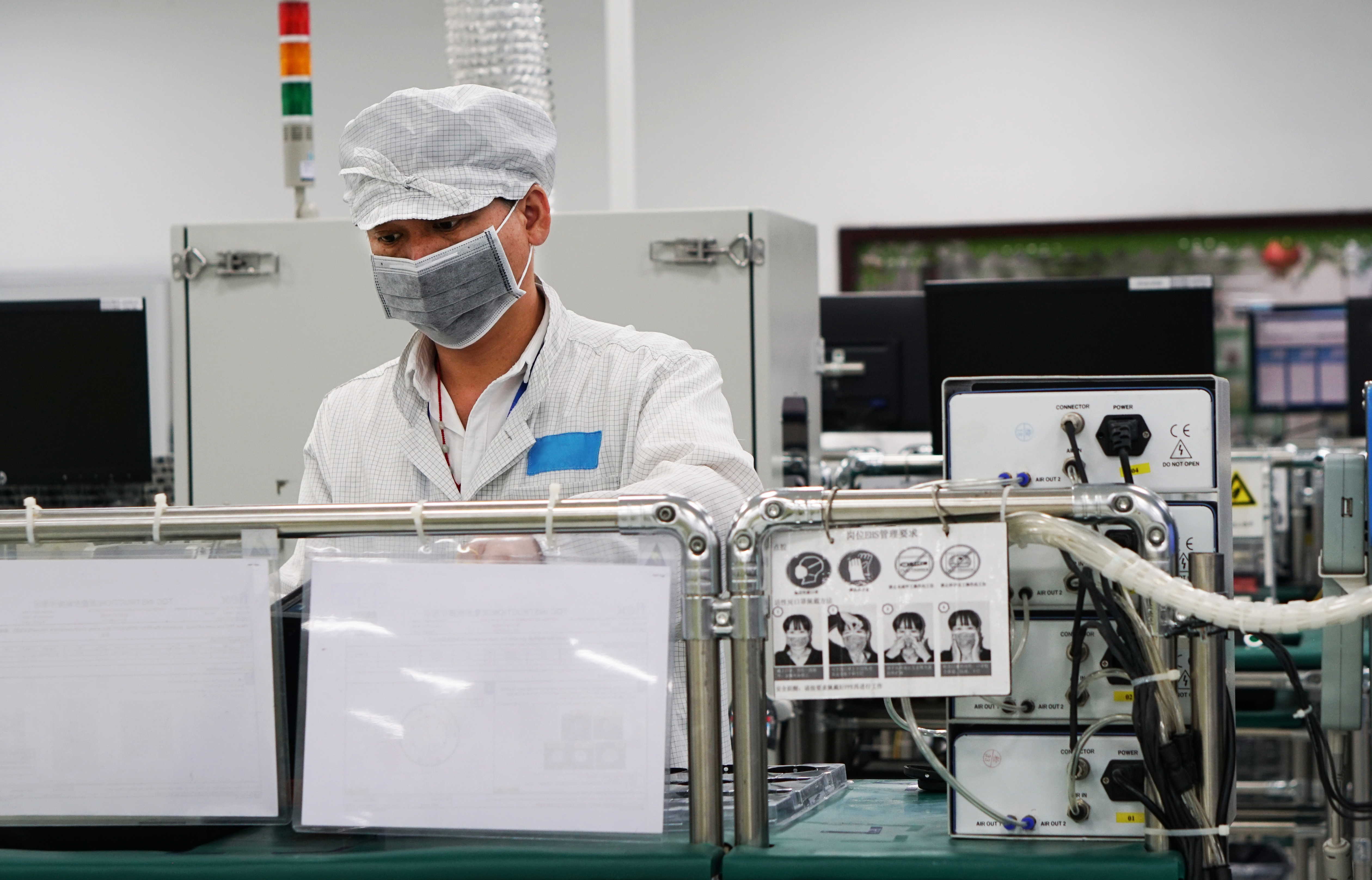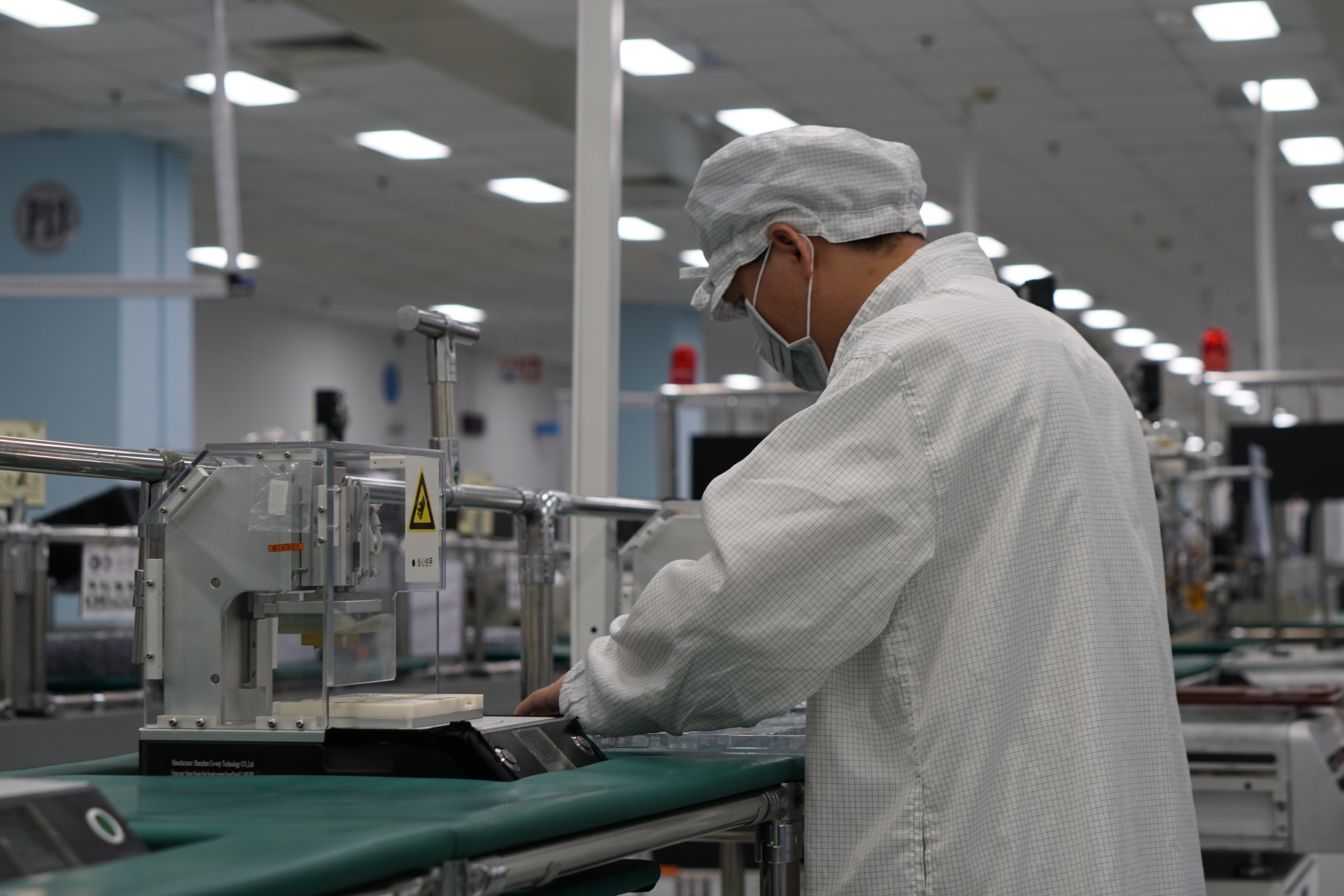Safer chemistry for healthy manufacturing
Featured technology
PIlot program
Who we’re helping
Our supply chain partners
Our role
Launched a manufacturing restricted substances list and training program for Google consumer hardware supplies

Consumers are rightfully concerned about toxic chemicals like lead or flame retardants in electronics. While it's important for us to limit these kinds of substances in Google products such as the Pixel 2 or Chromebook, we also take the use of harmful substances seriously during the manufacturing process to ensure that the people who make our products are safe too.
Just as no one should be harmed using a Google product, no one should be harmed making a Google product.
Eliminating these hazardous chemicals requires partnering closely with our suppliers, who often control chemical selection, management, and training. That's why we’ve been working hard to understand the causes and impacts of existing chemical management practices and to give our suppliers the knowledge and support they need to transition to safer alternatives.
Many of the chemicals used during the manufacturing process don’t show up in the product or packaging that reaches consumers. Instead, these chemicals are present in things like cleaners, degreasers, and cutting fluid—substances used to operate, clean, or maintain equipment. And these chemicals can pose a threat both to the people who work in our supply chain and to our environment.
Among the substances we seek to eliminate from product manufacturing are benzene, a chemical linked with cancer often found in cleaners1; toluene and n-hexane, highly flammable solvents that can potentially harm the nervous and reproductive systems2; and chlorinated organic solvents, which are often used as degreasers, cleaners, or thinning solutions and may cause headaches and skin rashes, in addition to damaging the central nervous system, liver, and kidneys.3
We’re also concerned about chemicals that contribute to greenhouse gas emissions. For example, we’re working to phase out sulfur hexafluoride, a greenhouse gas with 22,800 times more Global Warming Potential over a 100-year time frame than carbon dioxide, according to the United Nations Intergovernmental Panel on Climate Change.4
A better way to protect workers
Protecting the health and well-being of everyone who comes in contact with our products is a core Google value. Shortly after we launched our Responsible Supply Chain program in 2013, we began auditing suppliers for their use and management of hazardous chemicals during the manufacturing process. Integrated within our larger audit criteria, our requirements include everything from making sure suppliers have systems in place to identify, monitor, and control workers’ exposure to hazardous substances to demonstrating safe chemical handling, storage, and disposal procedures.
As our work evolves, we’re always looking for better ways to protect workers and hold suppliers more accountable. In 2017, we published a new manufacturing restricted substances list (MRSL) that we incorporated into the restricted substances specification for our consumer hardware products. We subsequently launched a new MRSL assessment program for Google consumer hardware suppliers.
The program singles out manufacturing restricted substances from other chemicals through a systematic self-assessment process that Google hardware manufacturers complete. In these assessments, we’re seeking to understand which chemicals on the MRSL (if any) our suppliers currently use, how the chemicals are being used, the type of exposure controls currently in place, and how many workers are affected by the process. We also want to understand suppliers’ monitoring systems: Are they currently measuring the air concentrations of specific MRSL chemicals at work stations? Do they verify the ventilation efficiency? Do they keep worker exposure assessment records?
Once we understand the landscape, we work with these suppliers to take corrective action and come up with plans to phase out the chemicals on the list.
Taking the time to do it right
It’s critical that suppliers understand the assessment process and our expectations, which is why we rolled out our MRSL training program in January 2018. The program is available to all Google hardware suppliers and includes a pilot webinar, workshops, in-person trainings at supplier factories, and e-learning courses in English and Chinese. To ensure compliance with the program, we also conduct follow-up investigations and on-site audits for MRSL hazards and controls.
Because it’s important to do things right, the assessment process can be complicated. In some cases, we’re asking suppliers to retrofit a process they’ve been following for years, including putting new controls, training, and safety procedures in place. This can increase costs and slow down production.
We also ask suppliers to suggest alternatives for substances on the MRSL that are safer for workers but don’t hurt product performance or present their own unintended consequences. We thoroughly analyze these alternatives for human, environmental, manufacturing, regulatory, and product performance impacts.
In some cases, it’s difficult to immediately eliminate a chemical of concern. While we work to develop a safer alternative, we do everything possible to see that workers are protected, which includes ensuring that suppliers have effective engineering controls, training, and protective equipment in place.
Our program is still in its early stages, but we have ambitious goals. As the program matures, we hope to work together with suppliers, nongovernmental organizations, and others in our industry to align on chemical management standards and share best practices. We also look forward to suppliers being more proactive in eliminating hazardous substances across all their manufacturing lines and implementing safer alternatives. As important as it is for manufacturers to eliminate hazardous substances when making Google products, industry progress will be limited if they still use these chemicals for non-Google products. Everyone must be on the same page to effectively phase out these substances.
Ultimately, our MRSL assessment program is one step in a bigger journey. As a company, we aspire to improve the lives of all who use our products, make our products, and support our operations—and that requires creating a supply chain model that protects people at every stage.
1 “Benzene Factsheet,” National Biomonitoring Program, Centers for Disease Control and Prevention, last updated April 7, 2017, https://www.cdc.gov/biomonitoring/Benzene_FactSheet.html.
2 “Toluene,” National Institute for Occupational Safety and Health, Centers for Disease Control and Prevention, last updated June 26, 2018, https://www.cdc.gov/niosh/topics/toluene/default.html, https://www.cdc.gov/niosh/pel88/110-54.html.
3 “Organic Solvents,” National Institute for Occupational Safety and Health, Centers for Disease Control and Prevention, last updated October 10, 2017, https://www.cdc.gov/niosh/topics/organsolv/default.html.
4 Climate Change 2007: The Physical Science Basis, Contribution of Working Group I to the Fourth Assessment Report of the Intergovernmental Panel on Climate Change, 2007, https://www.ipcc.ch/publications_and_data/ar4/wg1/en/ch2s2-10-2.html.

